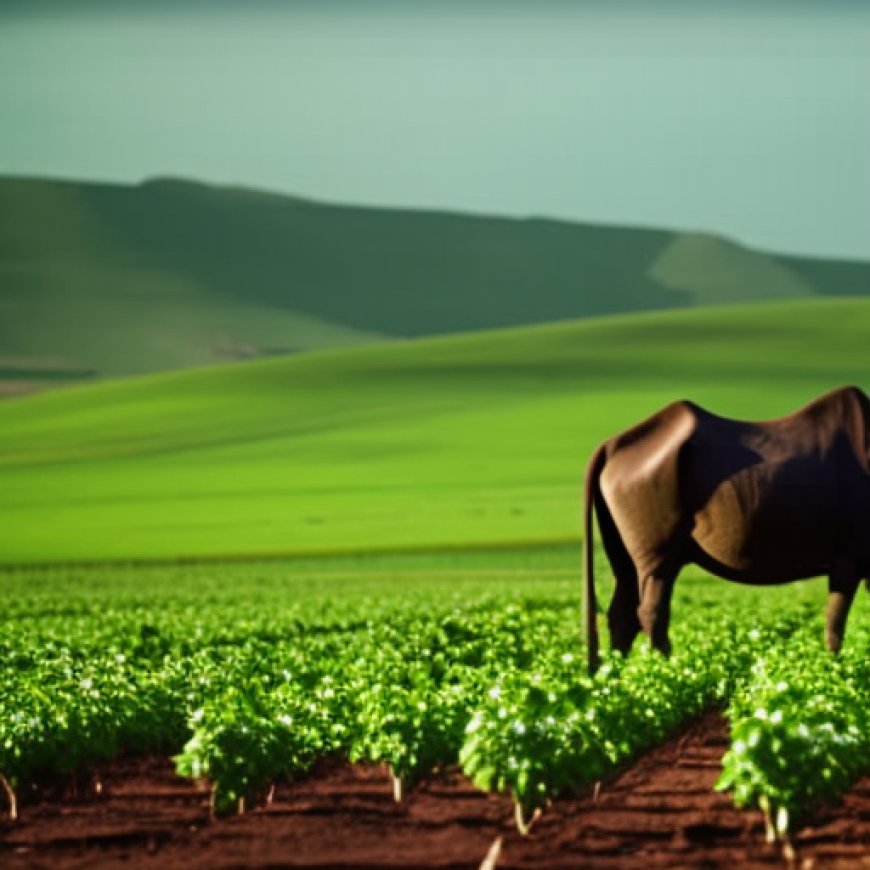Africa in Need of More Research in Agriculture
Africa in Need of More Research in Agriculture teleSUR English


The Importance of Increasing Investment in Agricultural Research in Africa

The Moroccan Minister of Agriculture, Fisheries and Rural Development, Mohamed Sadiki, emphasized the need to increase investment in research in Africa during a conference on agricultural research held at the Salon International de l’Agriculture du Maroc (SIAM). This event, which is the most important agricultural event in Africa, is hosted by the Ministry of Agriculture, INRA, the Office of the National du Conseil Agricole (ONCA), ICARDA, and the World Bank, with the participation of universities, private partners, NGOs, farmers, and extension agents.
Challenges and Disparities
Sadiki highlighted the significant disparities between developed and developing countries, particularly in terms of infrastructure, scientific capacity, technology, strategic vision, and governance. In Africa, there are limitations and a pressing need for agricultural research. In 2016, Africa invested only 0.39% of its agricultural GDP (AgGDP) in agricultural R&D, a decrease from 0.54% in 2000. This lack of investment hinders the ability to confront climate change, especially in the aftermath of the pandemic, which has further threatened food security.
The Sustainable Development Goals (SDGs)
The importance of agricultural research in Africa is aligned with the Sustainable Development Goals (SDGs) set by the United Nations. Goal 2 aims to end hunger, achieve food security, improve nutrition, and promote sustainable agriculture. Investing in agricultural research is crucial for achieving this goal and ensuring the well-being of African populations.
A Call for Action
African Union (AU) Agriculture Commissioner Josefa Sacko emphasized that food insecurity persists in Africa primarily because agricultural productivity has not kept pace with population growth. The AU recognizes the objective of allocating at least 1% of Africa’s GDP to research and promoting agricultural research as a fundamental pillar. It is crucial for African countries to increase their investment in research to address the challenges posed by climate change and ensure sustainable agricultural practices.
RELATED:
[embedded content]
SDGs, Targets, and Indicators in the Article
-
SDG 2: Zero Hunger
- Target 2.4: By 2030, ensure sustainable food production systems and implement resilient agricultural practices that increase productivity and production.
- Indicator 2.4.1: Proportion of agricultural area under productive and sustainable agriculture.
The article discusses the need for increased investment in agricultural research in Africa to confront climate change and ensure food security. This aligns with SDG 2, which aims to end hunger, achieve food security, improve nutrition, and promote sustainable agriculture. The specific target mentioned in the article is to implement resilient agricultural practices that increase productivity and production. The indicator that can be used to measure progress towards this target is the proportion of agricultural area under productive and sustainable agriculture.
-
SDG 9: Industry, Innovation, and Infrastructure
- Target 9.5: Enhance scientific research, upgrade the technological capabilities of industrial sectors in all countries, in particular developing countries, including, by 2030, encouraging innovation and substantially increasing the number of research and development workers per 1 million people and public and private research and development spending.
- Indicator 9.5.1: Research and development expenditure as a proportion of GDP.
The article highlights the disparity between developed and developing countries in terms of infrastructure, scientific capacity, and technology. This connects to SDG 9, which focuses on building resilient infrastructure, promoting inclusive and sustainable industrialization, and fostering innovation. The specific target mentioned in the article is to enhance scientific research and increase research and development spending. The indicator that can be used to measure progress towards this target is research and development expenditure as a proportion of GDP.
-
SDG 13: Climate Action
- Target 13.1: Strengthen resilience and adaptive capacity to climate-related hazards and natural disasters in all countries.
- Indicator 13.1.1: Number of deaths, missing persons, and directly affected persons attributed to disasters per 100,000 population.
The article emphasizes the need for increased investment in agricultural research to confront climate change. This aligns with SDG 13, which aims to take urgent action to combat climate change and its impacts. The specific target mentioned in the article is to strengthen resilience and adaptive capacity to climate-related hazards. The indicator that can be used to measure progress towards this target is the number of deaths, missing persons, and directly affected persons attributed to disasters per 100,000 population.
Table: SDGs, Targets, and Indicators
| SDGs | Targets | Indicators |
|---|---|---|
| SDG 2: Zero Hunger | Target 2.4: By 2030, ensure sustainable food production systems and implement resilient agricultural practices that increase productivity and production. | Indicator 2.4.1: Proportion of agricultural area under productive and sustainable agriculture. |
| SDG 9: Industry, Innovation, and Infrastructure | Target 9.5: Enhance scientific research, upgrade the technological capabilities of industrial sectors in all countries, in particular developing countries, including, by 2030, encouraging innovation and substantially increasing the number of research and development workers per 1 million people and public and private research and development spending. | Indicator 9.5.1: Research and development expenditure as a proportion of GDP. |
| SDG 13: Climate Action | Target 13.1: Strengthen resilience and adaptive capacity to climate-related hazards and natural disasters in all countries. | Indicator 13.1.1: Number of deaths, missing persons, and directly affected persons attributed to disasters per 100,000 population. |
Behold! This splendid article springs forth from the wellspring of knowledge, shaped by a wondrous proprietary AI technology that delved into a vast ocean of data, illuminating the path towards the Sustainable Development Goals. Remember that all rights are reserved by SDG Investors LLC, empowering us to champion progress together.
Source: telesurenglish.net

Join us, as fellow seekers of change, on a transformative journey at https://sdgtalks.ai/welcome, where you can become a member and actively contribute to shaping a brighter future.







